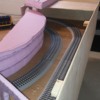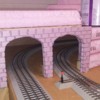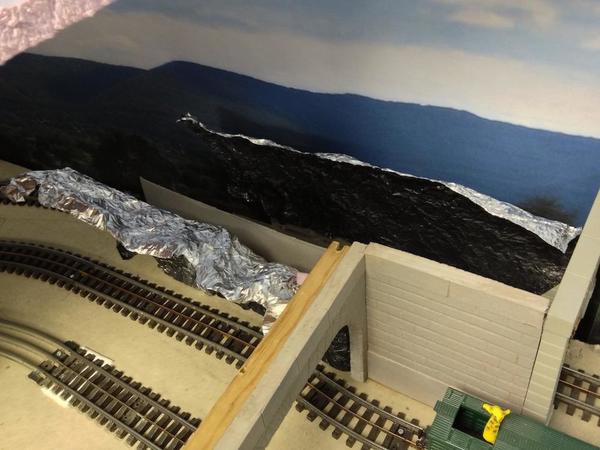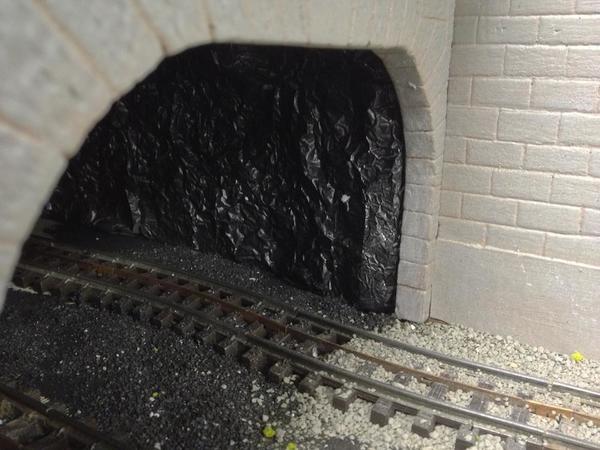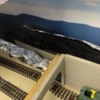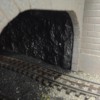I agree with Ed, chicken grit works well and it's inexpensive. Scrappy makes a good point also, regarding interior walls.
Another approach for scenic interior walls is to use crumple up heavy gauge aluminum foil for the first foot or so. First crumple the foil and semi flatten it out ( so there are still crumples ). Spray paint the foil flat black and/ or brown. The painted crumpled foil gives a blasted rock effect. I used heavy gauge foil for several feet inside a tunnel and the foil does not interfere with TMCC reception at all ... my TMCC locos work flawlessly while inside the tunnel. If you have TMCC or Legacy and decide to go the foil route, test your locomotives first before painting the foil. Do this test by temporarily fitting the unpainted foil inside your tunnel .... then run all your TMCC/Legacy locos by running them through the tunnel several times.... being sure to stop/start/ reverse/ and use tower com.
Once you have done all the above; shape the painted crumpled foil and fit it to the inside of your tunnel. Assuming you have some interior structural support, such as wood, use staples to attach the foil.... you won't need many ( and paint the staples too ). If you have styrofoam interior support structure use foam tack nail to attach and hold the foil in place ... and again paint the nail heads with the spray paint.
This is a relatively cheap, easy, and effective way to give tunnels a "real" interior look. Don't forget to hit the outside of portals with a dash of flat black spray paint to show for years of locomotive exhaust residue.
Good luck with your project whichever approach you decide to use!




